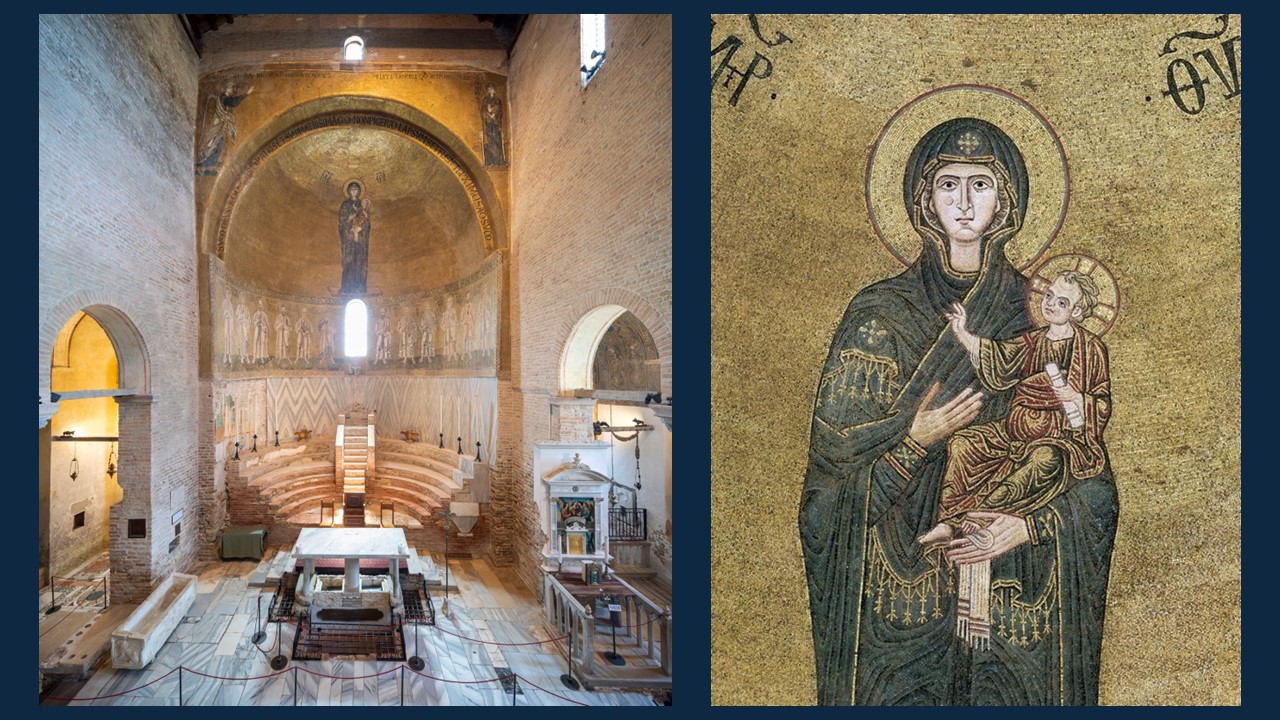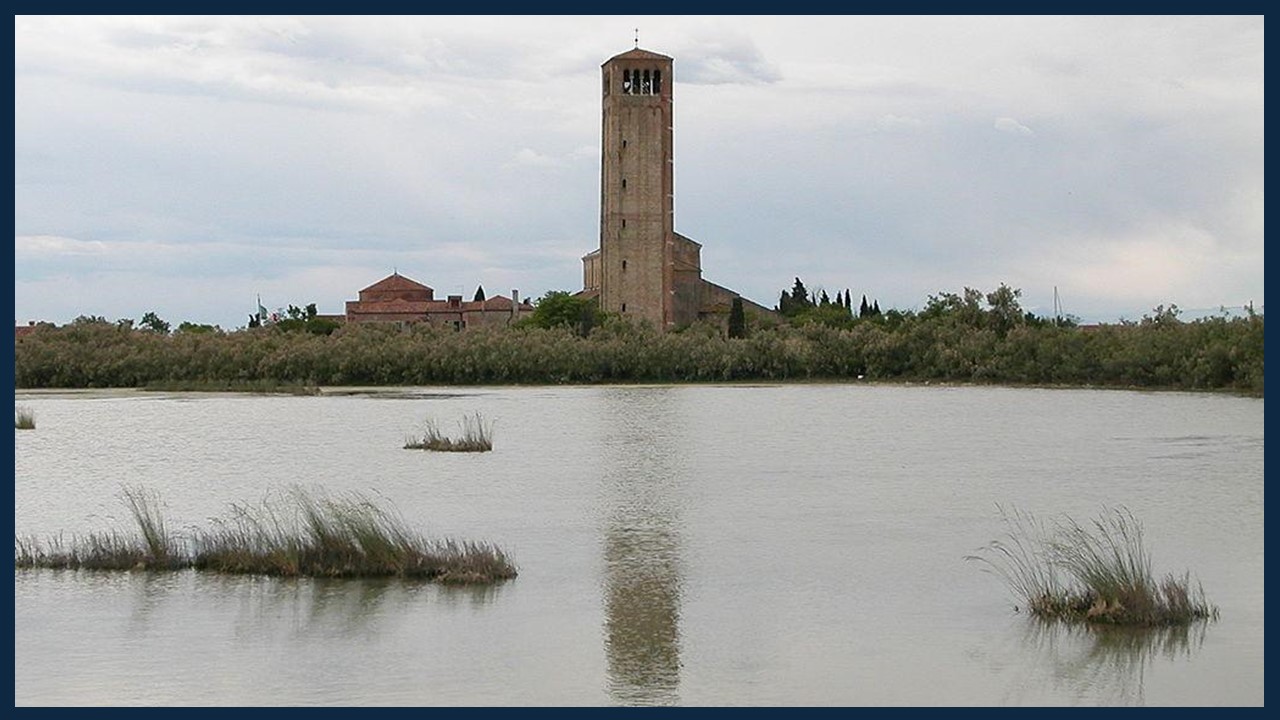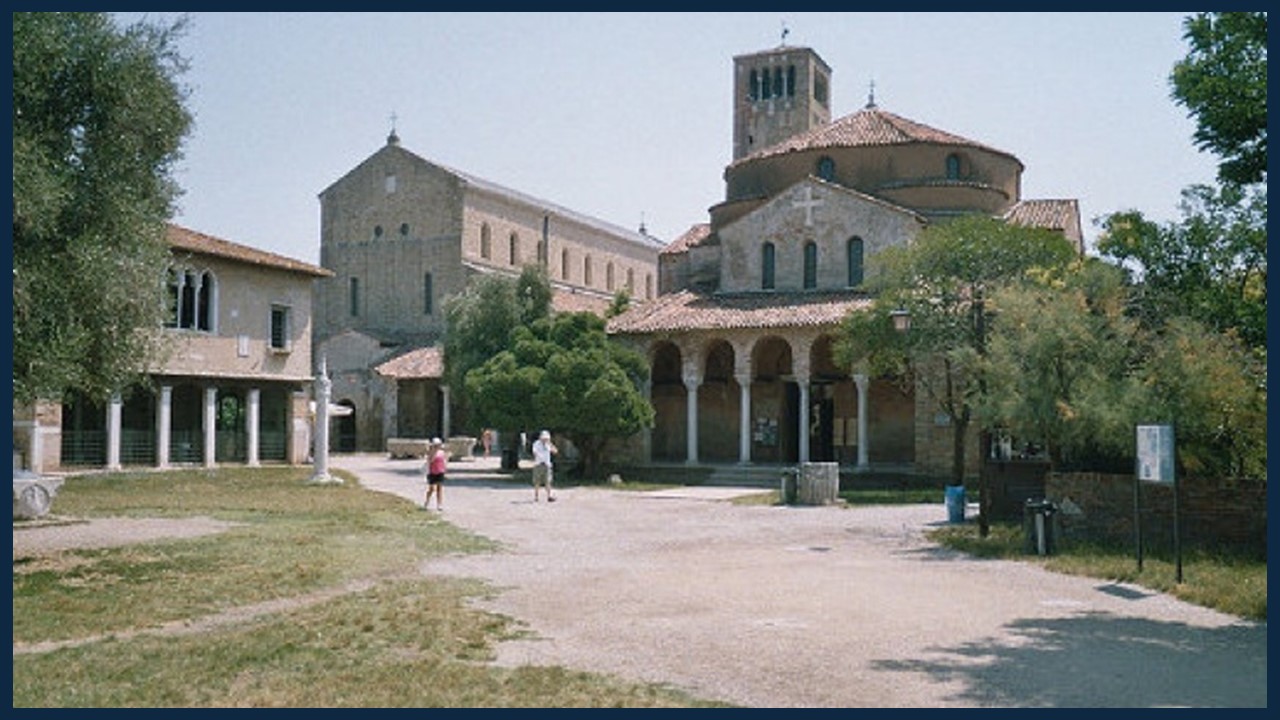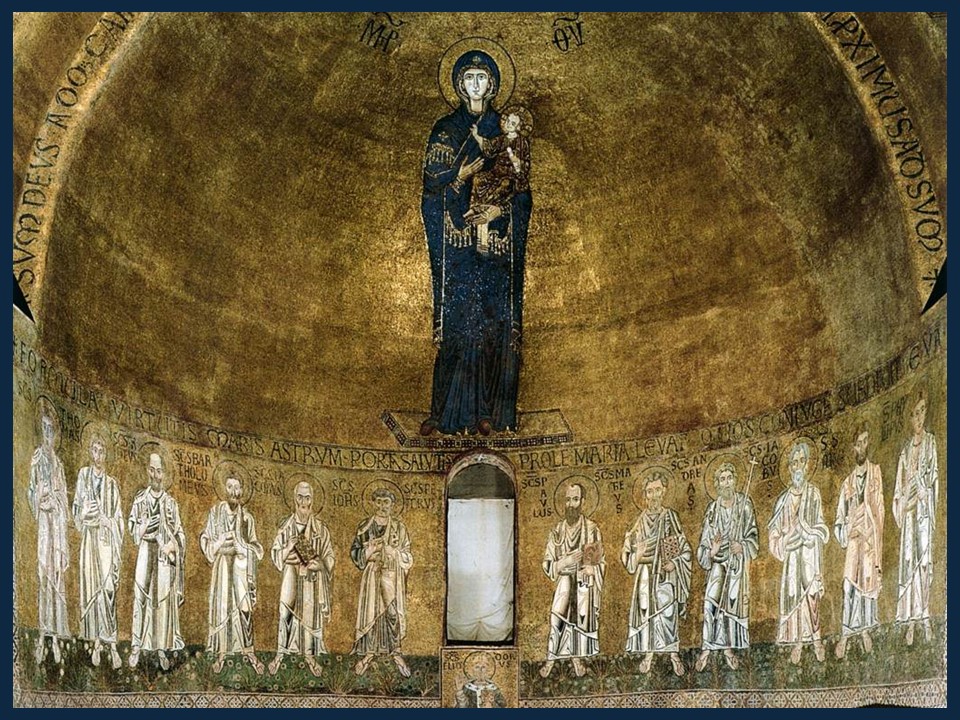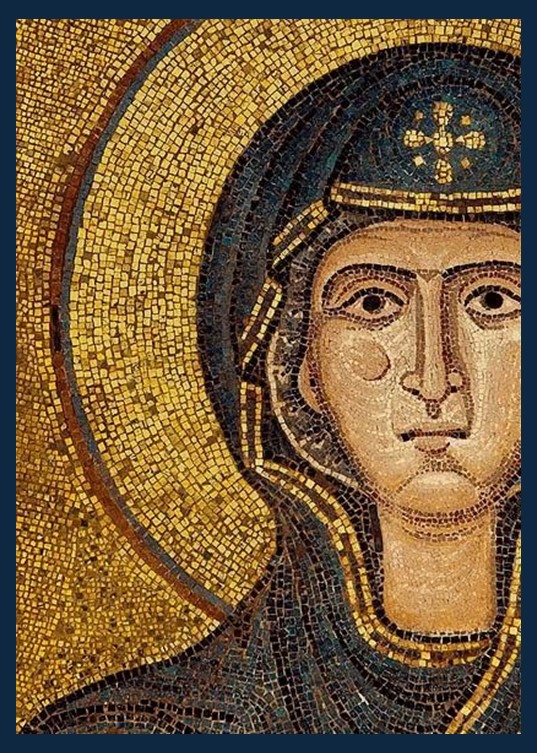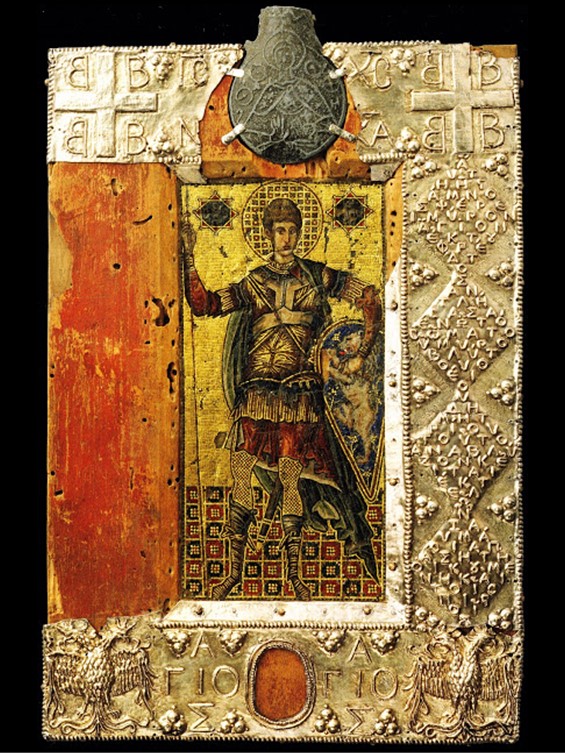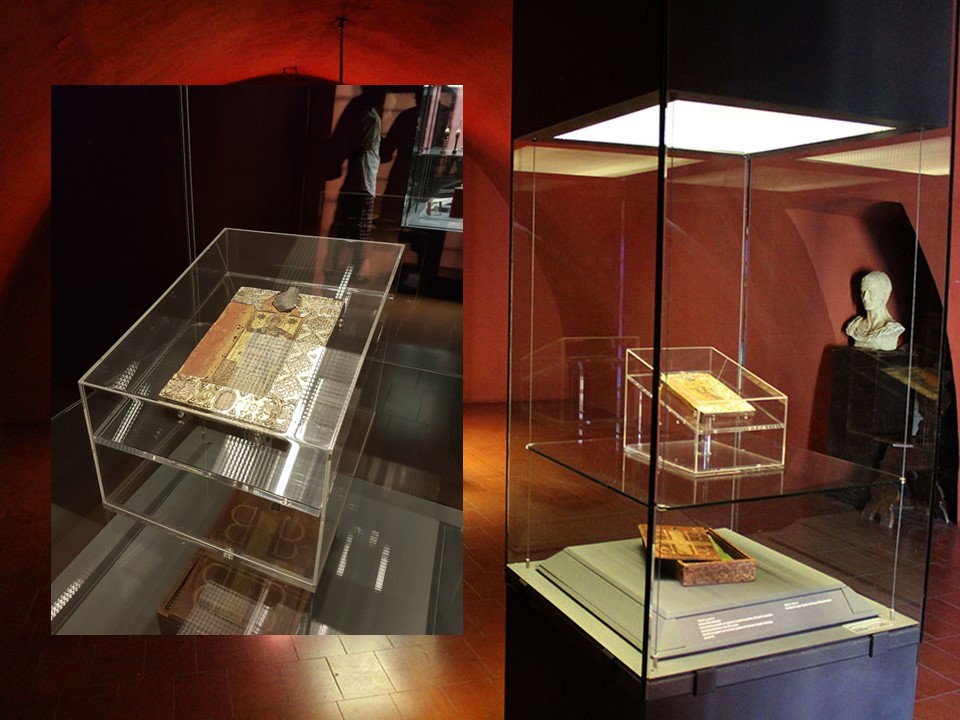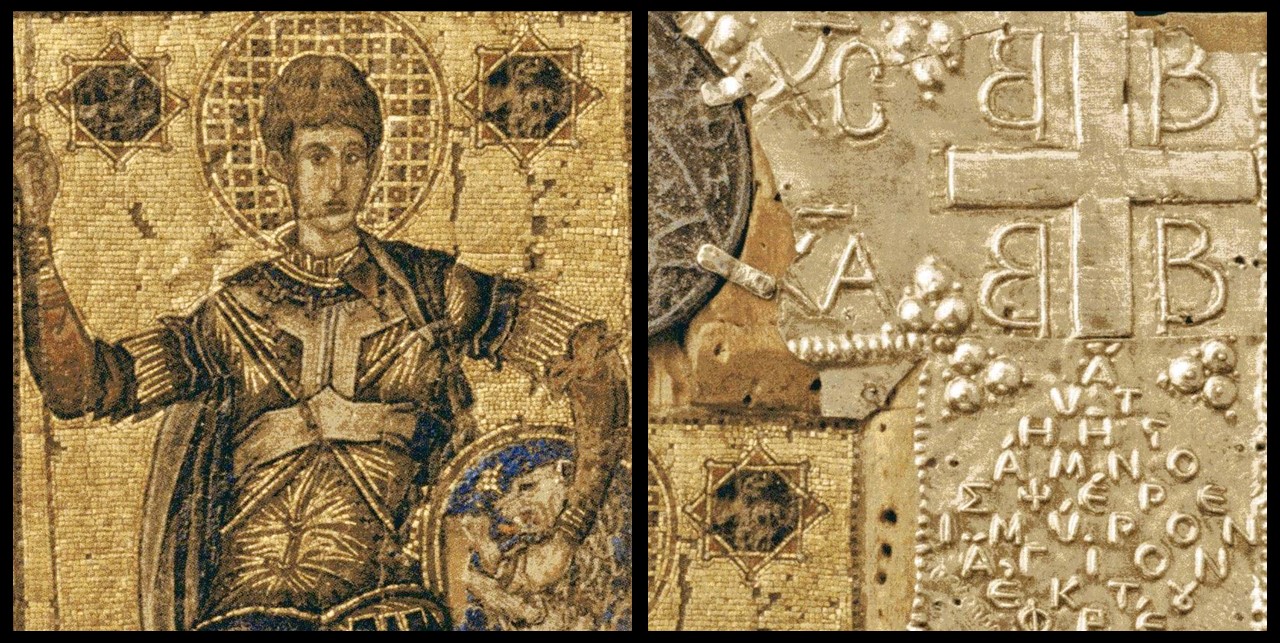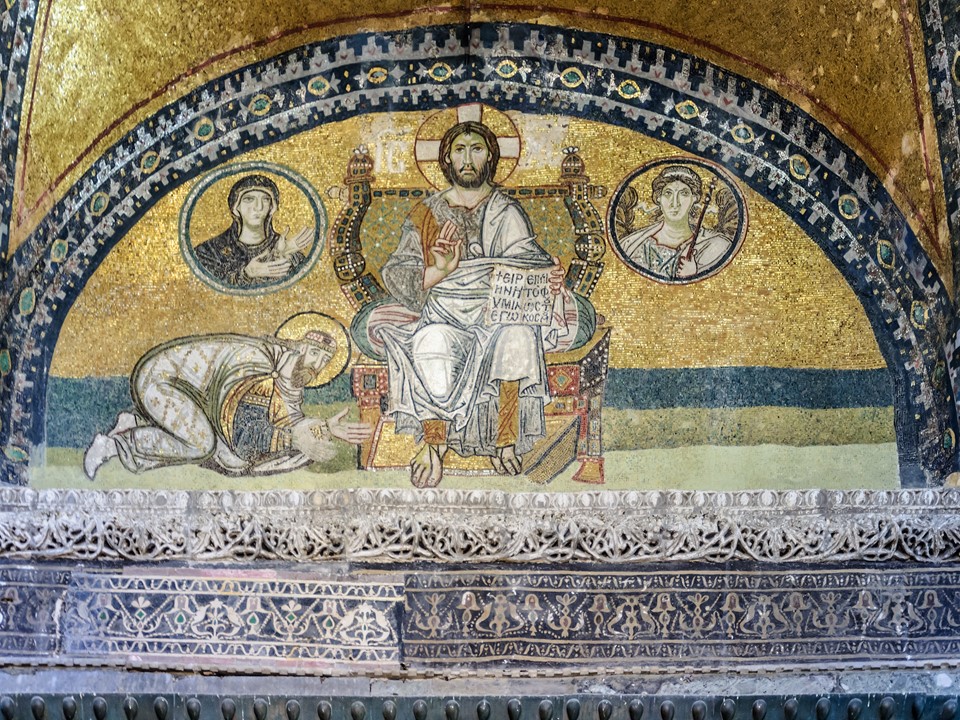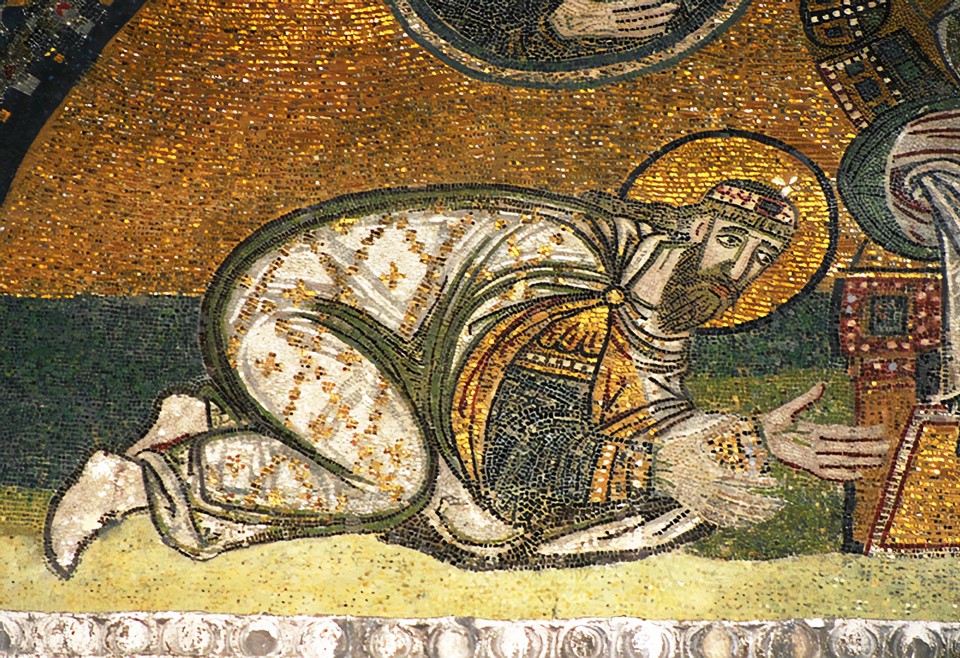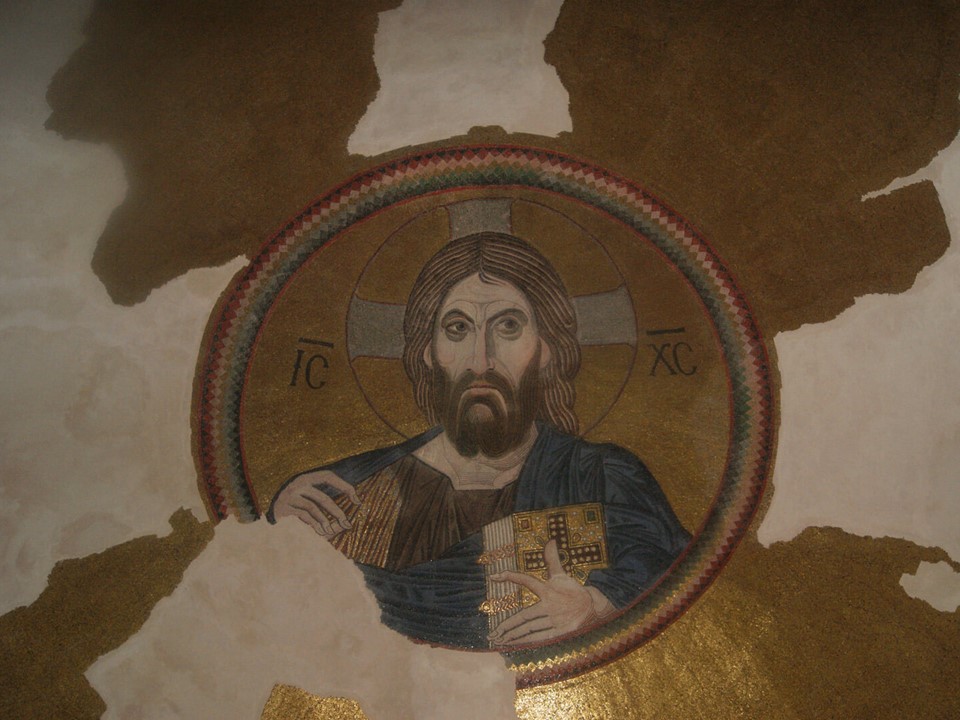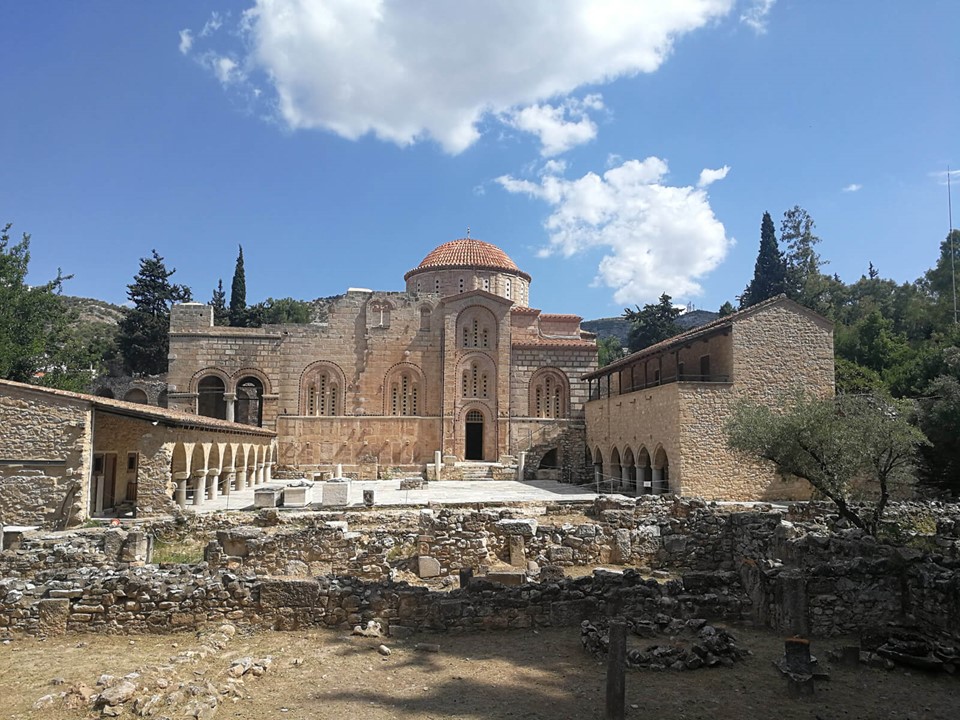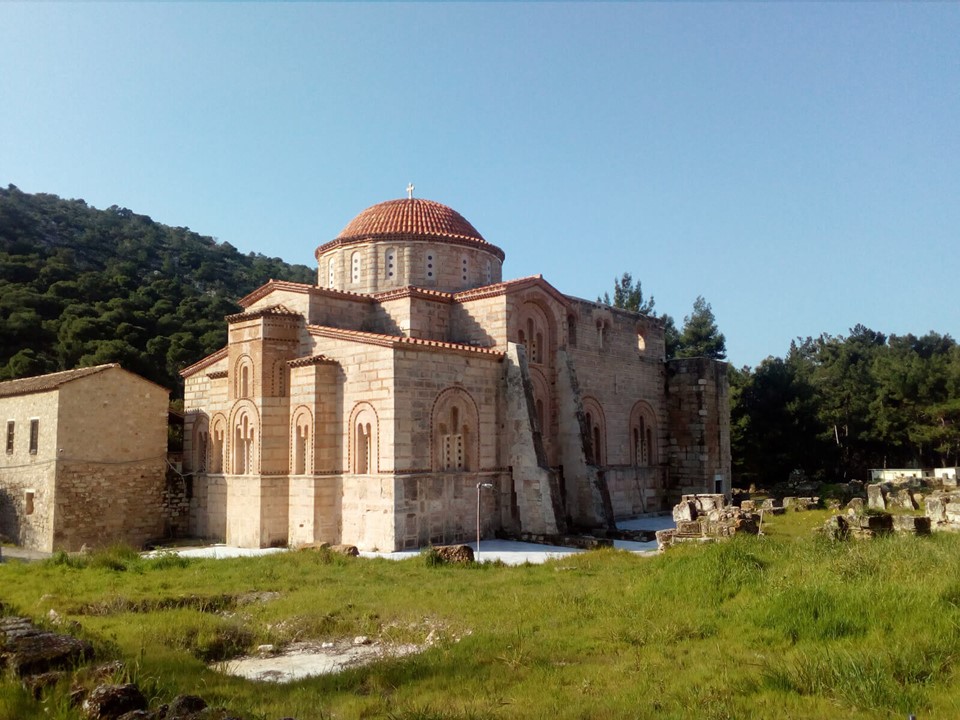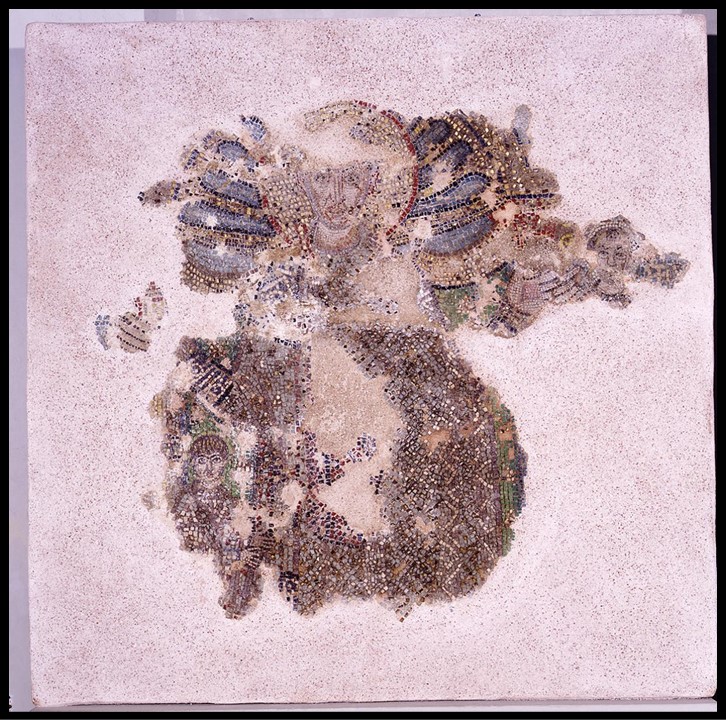
On the 26th of October, the Feast Day of Saint Demetrios… Let us honor with hymns the great soldier and athlete, the crowned victor, and the one who is marvelous among the martyrs, who was pierced by a spear in his side like the Master, the divine Demetrios… On the same day, let us remember a magnificent Wall Μosaic from the North Inner Aisle of his great Basilica in Thessaloniki, depicting Saint Demetrios in prayer position with Patrons, exhibited today in the city’s Museum of Byzantine Culture! https://www.imlagada.gr/default.aspx?catid=185
The year 1907 marked a pivotal moment for both Thessaloniki and Byzantine art. On August 1st, while the city was still under Ottoman rule, authorities began extensive renovations on Casimir Camii, originally the city’s Byzantine Church of Saint Demetrios. During the repairs, a remarkable and unexpected discovery was made: magnificent, well-preserved mosaics were uncovered on the wall of the North Inner Aisle of the nearly dilapidated church. The quality and preservation of these mosaics astounded scholars and Byzantinologists worldwide, prompting many to rush to Thessaloniki to study and document these extraordinary artworks.
Then, disaster struck on the 5th of August 1917… a great fire swept through the thriving city of Thessaloniki destroying two-thirds of the city’s center and leaving more than 70,000 homeless. The Great Fire of 1917 was a devastating event that ravaged many of the city’s historic and religious landmarks. Among the most significant losses was the Church of Saint Demetrios, the revered basilica dedicated to the city’s patron saint. The beautiful Mosaics of the Church’s North Inner Aisle discovered in 1907 were gone forever! Few photographs and even fewer paintings, created with care and sensitivity by artists, is all that remains… except a fragment of the mosaic over spandrel H depicting Saint Demetrios in prayer position with Patrons.
Originally built in the 5th century, this iconic structure was a center of worship and pilgrimage for centuries. The fire, which spread rapidly through the city’s wooden buildings, engulfed the church, causing extensive damage to its structure and the destruction of many of its priceless mosaics and artefacts. The loss of the church was deeply felt by the residents of Thessaloniki, as it symbolized not just a religious focal point, but also a vital part of the city’s cultural and spiritual heritage. The basilica was later meticulously restored, but the destruction marked a significant chapter in the history of Thessaloniki, highlighting the vulnerability of its treasured monuments to such catastrophes.
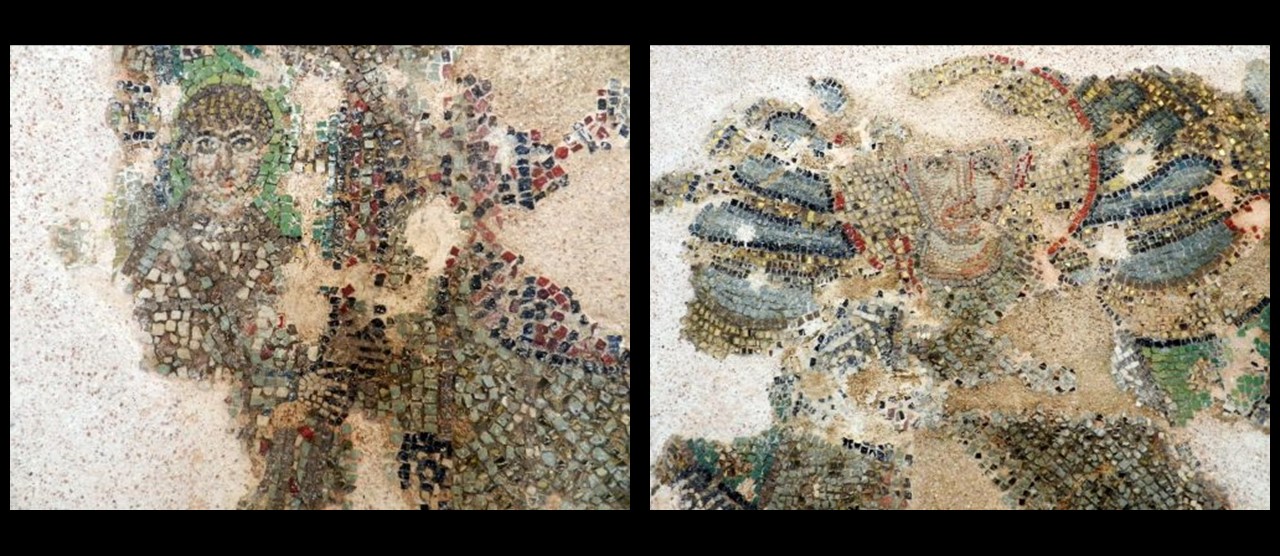
The mosaics in the North Inner Aisle of the Church of Saint Demetrios in Thessaloniki were among the most exquisite examples of Byzantine art. Their discovery, after having been concealed for centuries, was hailed as a major archaeological find, offering insight into the religious and artistic heritage of the city. These mosaics, dating back to various periods, depicted a range of sacred themes, including scenes of his miracles, and figures of saints and angels in prayerful poses. They were celebrated for their vibrant colours, detailed craftsmanship, and the way they illuminated the spiritual atmosphere of the basilica. The loss of these mosaics, in the Great Fire of 1917, represented a significant cultural and artistic tragedy, as they were irreplaceable treasures that connected the faithful to the early Christian and Byzantine heritage of the city. The destruction of the North Inner Aisle mosaics not only diminished the church’s aesthetic splendour but also erased a vital link to the city’s rich historical and religious narrative.
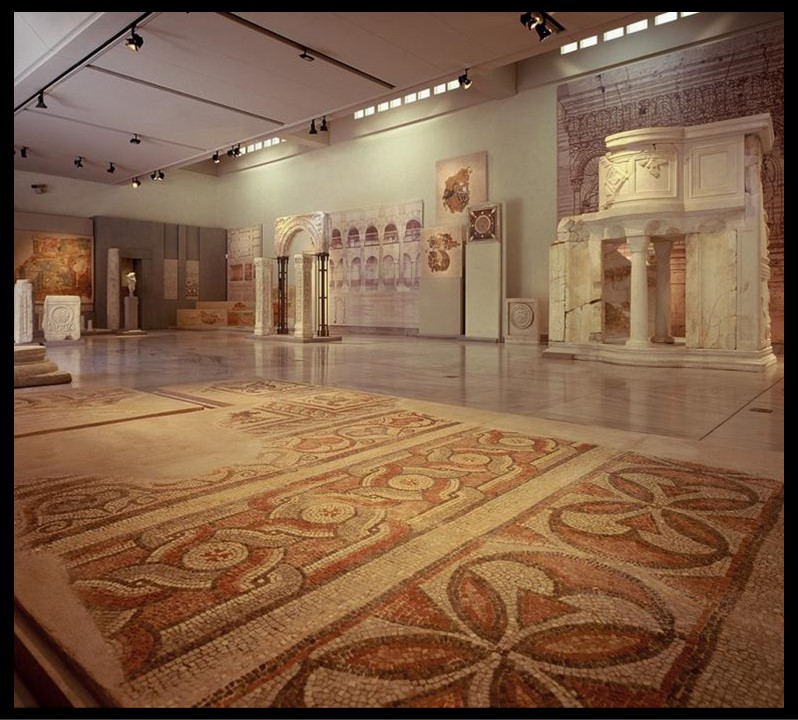
https://pierrekosmidis.blogspot.com/2015/11/1941-nazi-invasion-of-greece-through.html
According to the Thessaloniki Museum of Byzantine Culture experts, the mosaic of Saint Demetrios in prayer position with Patrons depicts the Saint… standing, in front of a golden niche of a building or kiborium decorated with a blue clam. He is in a posture of supplication, prayer, with his hands raised to the sky. He wears the uniform of an official official with a luxurious gold-embroidered cloak and tunic, which closes at the neck with embroidery of precious stones. To the left, at the height of the saint’s waist, is depicted a child with rich clothes and with his hands in a prayer position. Next to the left palm of the saint, a male head can be seen, possibly of the donor. The composition was probably a thanksgiving or a plea for help to the saint, by a wealthy believer. https://www.mbp.gr/exhibit/entoichio-psifidoto-me-ton-agio-dimitri/
If interested in the North Inner Aisle Mosaics of Hagios Demetrios in Thessaloniki… check The Mosaic Decoration of S. Demetrios, Thessaloniki: A Re-Examination in the Light of the Drawings of W. S. George by Robin S. Cormack in The Annual of the British School at Athens,
Vol. 64 (1969), pp. 17-52 (51 pages), Published by: British School at Athens https://www.jstor.org/stable/30103330?read-now=1&refreqid=excelsior%3A63a6e304a6bc30610613803b3f259b31&seq=1#page_scan_tab_contents
For a Student Activity, please… Check HERE!
